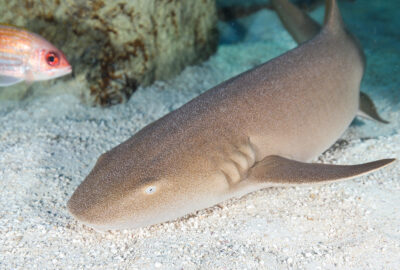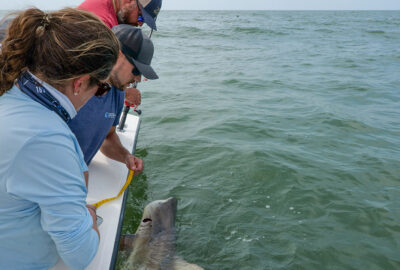Fun Facts About Nurse Sharks
By New England Aquarium on Friday, March 29, 2024

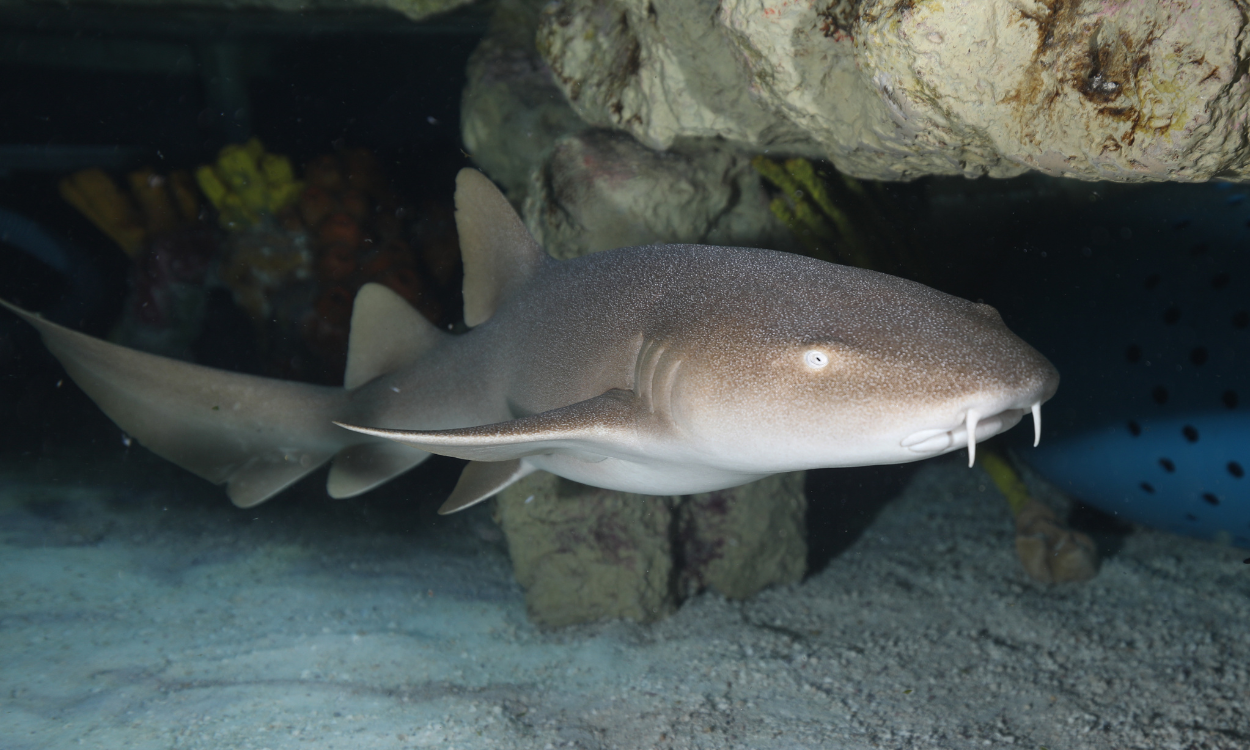
Recently, the Aquarium welcomed a new resident in the Giant Ocean Tank: Cirri, a young nurse shark who today measures approximately four feet long. This small shark (which will get much bigger) can be found in tropical and subtropical coastal waters of the Atlantic Ocean. In fact, Dr. Nick Whitney, senior scientist at the Aquarium’s Anderson Cabot Center for Ocean Life, has studied nurse sharks in Dry Tortugas, Florida, for several years to learn more about their mating behaviors and habitat.
Let’s learn more about them from Senior Aquarist Lindsay Phenix and Manager of the Giant Ocean Tank Mike O’Neill.
Nurse Sharks are benthic
Benthic refers to anything associated with or occurring on the bottom of a body of water, according to the National Oceanic Atmospheric Association. Nurse sharks often inhabit reefs and rest on sandy bottoms or in caves and crevices during the day. The animals and plants that live on or in the bottom of a body of water are known as the benthos.
They have unique skin
Phenix, who ventured out to the Dry Tortugas with O’Neill to study nurse sharks last summer, thinks that the skin of these marine animals is absolutely beautiful. It’s a mosaic of browns and tans and grays and often has the texture of sandpaper.
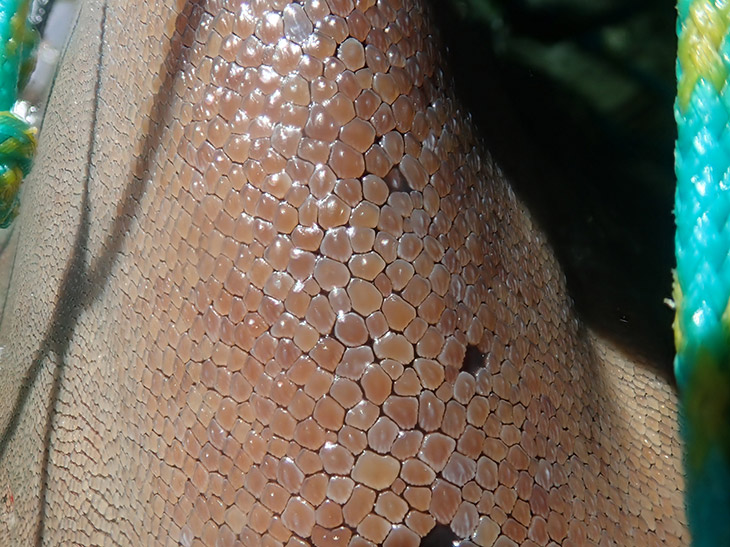
Nurse sharks have barbels
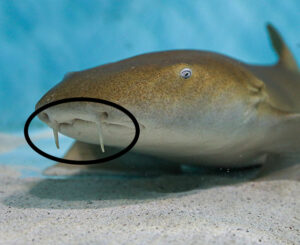
Barbels, O’Neill says, are just like whiskers on a cat. These barbels are fleshy appendages that hang below their nostrils. As the sharks rummage in the sand, the barbels pick up on stuff they might be hunting for, such as shellfish and other food items.
They don’t have to constantly swim to breathe
These marine animals tend to dwell on the bottom of the ocean and are one of a group of sharks that can breathe without constantly swimming, says Phenix. Many shark species have to keep moving to get water to pass over their gills. Nurse sharks use a unique system of muscles in their mouth to pump water over their gills, a process called “buccal pumping,” says Phenix.
Buccal pumping, says O’Neill, is a breathing method that involves the shark expanding its mouth and throat to create negative pressure and suck water in. The pump opens and closes, and forces water out over the gills so the shark can breathe while lying in place.
They don’t have the teeth of typical sharks
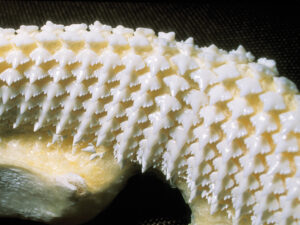
These sharks have a different eating style, Phenix says. Nurse sharks have a jaw and small teeth that allows them to generate suction to capture prey, and to crunch hard shells like crustaceans. They also eat fish and cephalopods.


